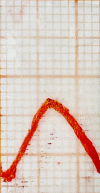A novel technique to quantify bone-to-implant contact of zygomatic implants: a radiographic analysis based on three-dimensional image registration and segmentation
- PMID: 36645052
- PMCID: PMC9974236
- DOI: 10.1259/dmfr.20220210
A novel technique to quantify bone-to-implant contact of zygomatic implants: a radiographic analysis based on three-dimensional image registration and segmentation
Abstract
Objectives: The purpose of this study is to establish a novel, reproducible technique to obtain the BIC area (BICA) between zygomatic implants and zygomatic bone based on post-operative cone-beam computed tomography (CBCT) images. Three-dimensional (3D) image registration and segmentation were used to eliminate the effect of metal-induced artifacts of zygomatic implants.
Methods: An ex-vivo study was included to verify the feasibility of the new method. Then, the radiographic bone-to-implant contact (rBIC) of 143 implants was measured in a total of 50 patients. To obtain the BICA of zygomatic implants and the zygomatic bone, several steps were necessary, including image preprocessing of CBCT scans, identification of the position of zygomatic implants, registration, and segmentation of pre- and post-operative CBCT images, and 3D reconstruction of models. The conventional two-dimensional (2D) linear rBIC (rBICc) measurement method with post-operative CBCT images was chosen as a comparison.
Results: The mean values of rBIC and rBICc were 15.08 ± 5.92 mm and 14.77 ± 5.14 mm, respectively. A statistically significant correlation was observed between rBIC and rBICc values ([Formula: see text]=0.86, p < 0.0001).
Conclusions: This study proposed a standardized, repeatable, noninvasive technique to quantify the rBIC of post-operative zygomatic implants in 3D terms. This technique is comparable to conventional 2D linear measurements and seems to be more reliable than these conventional measurements; thus, this method could serve as a valuable tool in the performance of clinical research protocols.
Keywords: Bone-to-implant contact; CBCT imaging; atrophic edentulous maxilla; post-operative radiographic bone-to-implant contact; zygomatic implants.
Figures










References
-
- Greenfield, EJ. Implantation of artificial crown and bridge abutments. Dent Cosmos 1913; 55: 364. - PubMed
MeSH terms
Substances
LinkOut - more resources
Full Text Sources
Medical

